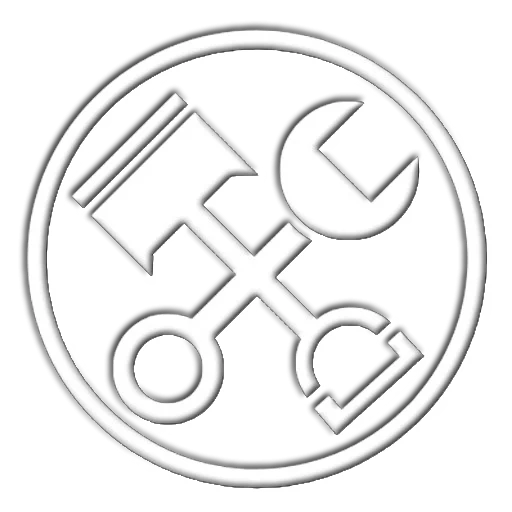Role of the Power Steering Pump
The vane-type hydraulic power steering pump is a component that helps assist steering operations.
It is driven by a belt connected to the engine’s crankshaft, which turns the pump pulley. Inside the pump, fluid is pressurized and then sent to the power steering rack.
This hydraulic pressure helps ensure that the steering smooth and easy to operate, especially at low speeds when the tires experience greater friction against the road surface.
Structure and Operation of a Vane-Type Oil Pump
The vane-type oil pump is a hydraulic pump driven by the engine via a belt.
Inside the pump, there are components such as a rotor, vanes, and a cam ring. As the rotor spins, the vanes are pushed outward by centrifugal force and slide along the cam ring.
This movement causes the internal volume of the pump to change, drawing in and pushing out fluid as a result.
Flow Control and Excess Pressure Management
Since the amount of fluid discharged by the pump increases with engine speed, excess fluid may be delivered at high RPMs.
To prevent over-supply, a flow control valve automatically redirects excess fluid back to the reservoir.
This helps maintain stable hydraulic pressure, prevents unnecessary strain on the system, and reduces fluid degradation.
Wear Over Time and the Importance of Overhauling
Internal components such as seals and bearings can wear out over time.
This may lead to fluid leaks, unusual noises, or reduced hydraulic pressure.
To restore the pump’s original performance and ensure long-term reliability, it is recommended to perform an overhaul which includes disassembly, cleaning, and replacement of worn parts before major issues occur.
Common Symptoms and Possible Causes of Failure
- Fluid leaks
- Deterioration of oil seals and O-rings
- Worn shaft surfaces
- Deteriorated hoses, cracks in piping, or loose connections
- Unusual noise from the pump and fluid foaming in the reservoir tank (cavitation)
- Wear of vanes or cam ring
- Bearing wear and deterioration
- Insufficient lubrication due to low fluid level
- Heavier steering operation
- Low fluid level
- Worn vanes or reduced pump pressure
- Flow control valve malfunction
- Loose or worn power steering belt
- Power steering rack problems and failures
Power Steering Pump Overhaul – Recommended Hose Replacement
On older vehicles, when overhauling the power steering pump, we recommend replacing the hoses at the same time.
Hoses are prone to age-related wear such as hardening and cracking, and the clamping force of the clamps may also deteriorate over time.
Even if there were no leaks before, it is not uncommon for power steering fluid to start seeping from the hoses after the final inspection or test run. This often occurs because the process of removing and reinstalling the hoses can put additional stress on aged components, leading to seepage after reassembly.
Note: For some models, hoses may already be discontinued. Please feel free to contact us for availability.
Power Steering Pump FAQ
-
What does a power steering pump do?
-
The power steering pump generates hydraulic pressure to assist the driver in turning the steering wheel more easily. It supplies pressurized fluid to the power steering rack, reducing steering effort—especially at low speeds.
-
What are the symptoms of a failing power steering pump?
-
Common signs include:
- Whining or groaning noises when turning the steering wheel
- Leaking power steering fluid
- Heavier-than-usual steering
- Fluid foaming in the reservoir
- Jerky or inconsistent steering response
-
What causes a power steering pump to fail?
-
Possible causes include:
- Worn internal components (vanes, bearings, seals)
- Contaminated or low fluid
- Faulty flow control valve
- Loose or worn power steering belt
- Problems with the steering rack
-
Should I replace my alternator with a used, rebuilt, or brand-new unit?
-
Each option has its pros and cons:
- Used Power Steering Pump:
Affordable, but condition and lifespan are uncertain. Internal wear may not be visible, and there’s no guarantee how long it will last. Best suited for short-term use or temporary fixes. - Rebuilt Power Steering Pump:
A cost-effective and reliable option when rebuilt by professionals using genuine components. It’s fully inspected, worn parts are replaced, and performance is restored. Ideal for those seeking quality and savings. - Brand-New Power Steering Pump:
Offers maximum reliability and warranty coverage, but typically comes at a higher price. Best for those prioritizing long-term peace of mind and minimal downtime.
- Used Power Steering Pump:
